UMBC has had an AI presence since the late 1980s and currently has more than 35 faculty with research interests in AI and related areas, including machine learning and data science.
Highlighted CSEE AI Labs:
Riadul Islam, Ph.D.

AI in IC Synthesis: At leading technology nodes, the industry faces a stiff challenge to make profitable ICs. The major issues are the design rule checking (DRC) violation, timing violations, area constraint, and frequency constraints. In this research, we cohort with the DARPA IDEA program that aims for “no-human-in-the-loop” and 24-hour turnaround time to implement an IC from design specifications. To reduce human effort, we introduce new machine learning algorithms to help inexperienced engineers. Publications: DAC 2019 and MWSCAS 2019.
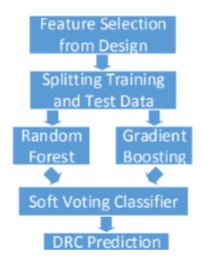
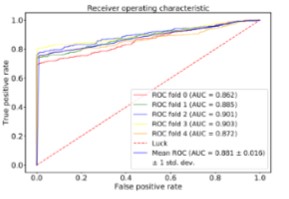
AI in Network Security: The controller area network (CAN) is the most widely used intra-vehicular communication network in the automotive industry. Its simplicity in design lacks most of the requirements needed for a security-proven communication protocol. However, a safe and secure environment is imperative for autonomous as well as connected vehicles. Therefore CAN security is considered one of the essential topics in the automotive research community. In this research, we introduced novel graph-based machine learning algorithms to secure CAN bus. Publications: IEEE T-ITS 2020 and Springer JTS 2020.
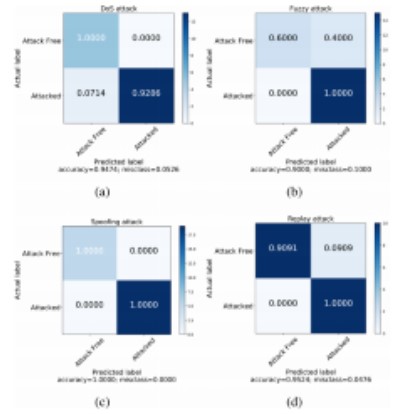
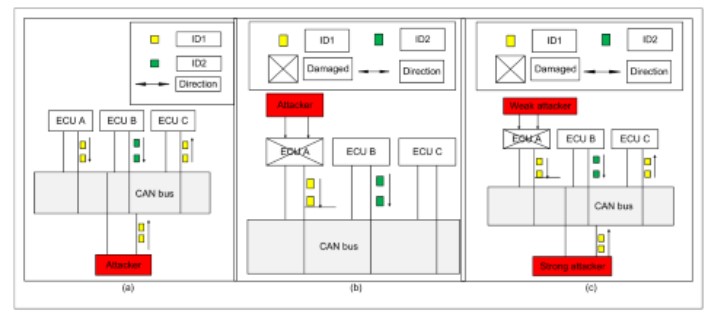
AI-related Hardware: To enable real-time machine learning, we are working on an energy-efficient neuromorphic IC design.
Chen Chen Liu, Ph.D.

Adapting to the new computing environment of artificial intelligence (AI) and Internet-of-Thing (IoT), our research efforts are devoting to high-performance intelligent computing in the domain of architecture and system, algorithm and applications via hardware and software cooperated solutions. The developments include brain-inspired computing approaches for ultra-high energy-efficient AI, novel deep learning algorithms, and algorithm-architecture co-designs for CPU/GPU systems acceleration and energy-efficiency optimization, federated learning and distributed systems, and their applications in autonomous driving, biomedical, etc.
Tinoosh Mohsenin, Ph.D.

Energy Efficient High Performance Computing Lab
Energy Efficient Autonomous Systems and Robotics
Guiding Safe Reinforcement Learning Policies Using Structured Language Constraints
Reinforcement learning (RL) has shown success in solving complex sequential decision making tasks when a well defined reward function is available. For agents acting in the real world, these reward functions need to be designed very carefully to make sure the agents act in a safe manner. This is especially true when these agents need to interact with humans and perform tasks in such settings. However, hand-crafting such a reward function often requires specialized expertise and quickly becomes difficult to scale with task-complexity. This leads to the long-standing problem in reinforcement learning known as reward sparsity where sparse or poorly specified reward functions slow down the learning process and lead to sub-optimal policies and unsafe behaviors. To make matters worse, reward functions often need to be adjusted or re-specified for each task the RL agent must learn. On the other-hand, it’s relatively easy for people to specify using language what you should or shouldn’t do in order to do a task safely. Inspired by this, we propose a framework to train RL agents conditioned on constraints that are in the form of structured language, thus reducing effort to design and integrate specialized rewards into the environment. In our experiments, we show that this method can be used to ground the language to behaviors and enable the agent to solve tasks while following the constraints. We also show how the agent can transfer these skills to other tasks.
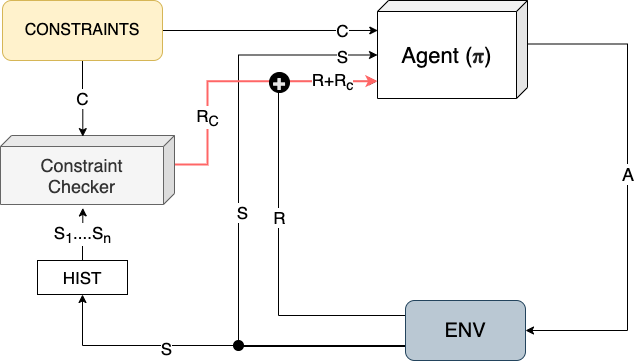
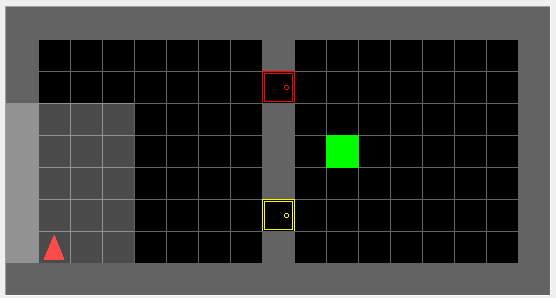
Energy-Efficient Hardware for Language Guided Reinforcement Learning
Reinforcement learning (RL) has shown great performance in solving sequential decision-making problems. While a lot of works have done on processing state information such as images, there has been some effort towards integrating natural language instructions into RL. In this research, we propose an energy-efficient architecture which is designed to receive both images and text inputs as a step towards designing RL agents that can understand human language and actin real-world environments. Different configurations are proposed to illustrate the trade-off between the number of parameters and the model accuracy, and a custom low power hardware is designed and implemented on FPGA based on the best configuration. The hardware designed to be configurable with different parameters such as the number of processing elements, so that it can easily balance power and performance. The high throughput configuration achieves 217 frames per second throughput with 1.2 mJ energy consumption per classification on Xilinx Artix-7 FPGA, while the low-power configuration consumes less than 139 mW for 30 frames per second classification. Compared to similar works using FPGA for hardware implementation, our design is more energy-efficient and needs less energy for generating each output.
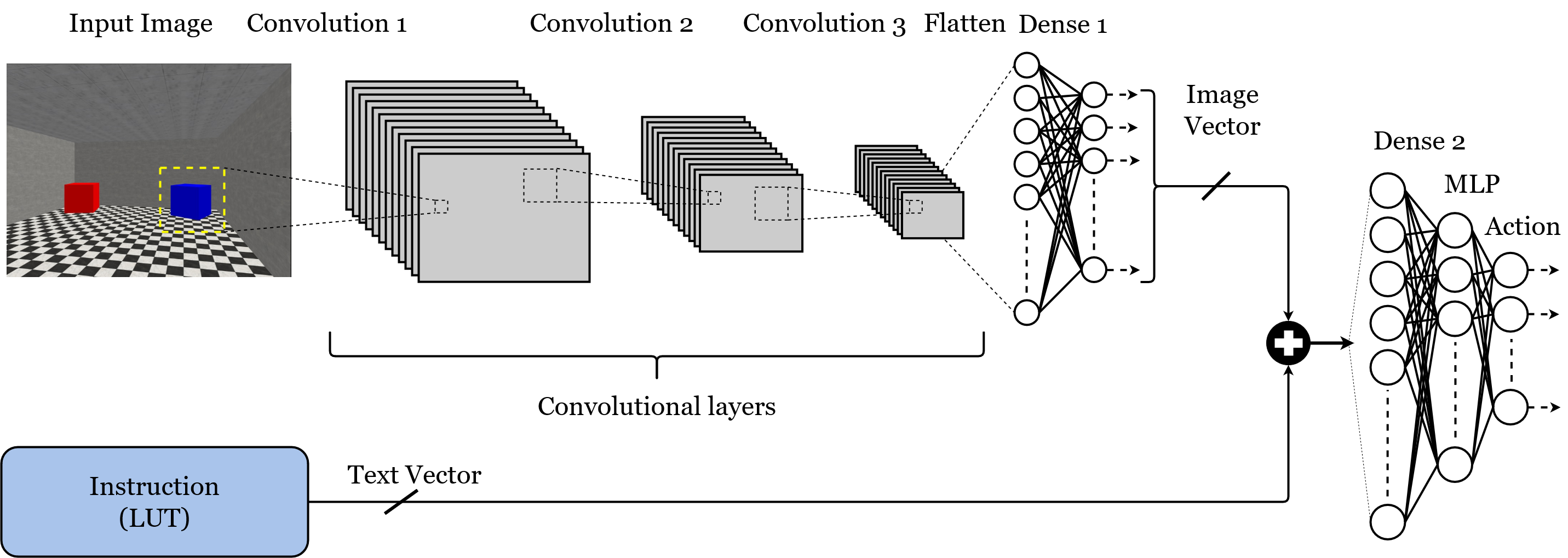
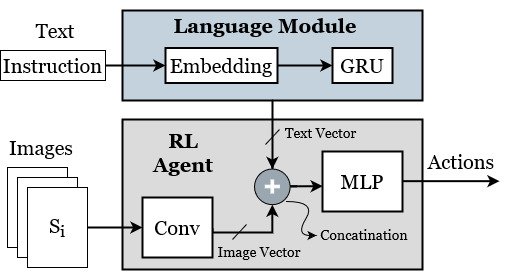
Roberto Yus, Ph.D.

Click HERE for Personal Webpage
The global IoT market size is projected to reach $1,000B by 2026 with dozens of billions of smart devices connected to the Internet by then. The expectations of individuals with respect to their privacy are also increasing and new legislation to protect individuals’ privacy (such as Europe’s GPDR, California’s CCPA, Brazil’s LGPD, and India’s PDPB) is emerging worldwide. The large amounts of highly heterogeneous data captured by those devices will require further processing (e.g., using machine learning algorithms) to become useful, but sometimes sensitive, inferences that applications and people can use.
In my research, I focus on the design of semantic data management solutions to empower IoT systems to understand user information requirements, as well as their privacy preferences, and tailor their operations to satisfy both. AI, in particular Knowledge Representation and Reasoning as well as Machine Learning, is essential to accomplish this task. I work on bridging the semantic gap that exists between the IoT world (with devices/sensors & raw observations) and the world in which people interact (of smart spaces, events, people, and their interrelations). I’m interested in the design of models to represent smart IoT space knowledge to facilitate the development of interoperable and portable IoT applications. Additionally, I’m interested in making IoT data management scalable, efficient, and privacy-aware.
RESEARCH FACULTY:
Below is a complete list of full-time UMBC faculty with research interests in AI, machine learning and/or data science. Most of this is focused in the Computer Science and Electrical Engineering, Information Systems and Mathematics and Statistics departments.
- Tülay Adali (CSEE): machine learning for signal processing and bioinformatics
- Chien I. Chang (CSEE): remote sensing, image processing.
- David Chapman (CSEE): computer vision and machine learning, deep networks
- Zhiyuan Chen (IS): data mining, adversarial learning, semantic information
- Sisi Duan (IS): data analytics in distributed systems and cyber physical systems, sensor network, critical infrastructure systems
- Mohammad ‘Khash’ Donyaee (CSEE, Lecturer): AI, machine learning
- Abhijit Dutt (CSEE, Professor of Practice): data science, AI, machine learning
- Don Engel (CSEE): visualization, AI, NLP
- Frank Ferraro (CSEE): natural language understanding (NLP), machine learning
- Tim Finin (CSEE): Knowledge graphs, NLP, AI
- James Foulds (IS): socially conscious machine learning and artificial intelligence
- Aryya Gangopadhyay (IS): data mining, healthcare analytics
- Jiaqi Gong (IS): data science and machine learning for sensors
- Milton Halem (CSEE): Big data for climate, quantum computing for AI
- Vandana Janeja (IS): data science, data mining, anomaly detection
- Ben Johnson (CSEE, Lecturer): AI, NLP, machine learning
- Tyler Josephson (CBEE): AI, logic, machine learning, molecular simulation, applications in chemical and environmental engineering
- Anupam Joshi (CSEE): AI for Cybersecurity & Cyberphysical systems, Web/text analysis, Semantic Web, neural networks
- Karuna Joshi (IS): machine learning, data science, knowledge graphs
- Kostas Kalpakis (CSEE): data science, algorithms for knowledge graphs, machine learning
- George Karabatis (IS): data science, semantic information integration, machine learning
- Seung-Jun Kim (CSEE): machine learning, applications to communications, future power systems and big data analytics
- Jacob Kogan (Math): data/text mining, machine learning
- Chenchen Liu (CSEE): high-performance computing for AI, machine learning
- James Lo (Math): intelligent systems, neural networks for systems control and signal processing
- Christopher Marron (CSEE, Professor of Practice): machine learning, data science
- Cynthia Matuszek (CSEE): Robotics, Human-robot interaction, machine learning, NLP, cybersecurity
- Maryam Rahnemoonfar (IS): Deep Learning, Computer Vision, Data Science, AI for Social Good, Remote Sensing, and Document Image Analysis
- Tinoosh Mohsenin (CSEE): signal processing and biomedical applications
- Charles Nicholas (CSEE): machine learning for malware detection, intelligent information systems
- Tim Oates (CSEE): machine learning, AI
- Shimei Pan (IS): NLP, machine learning, data mining
- Hamed Pirsiavash (CSEE): Computer vision and ML, deep networks
- Sanjay Purushotham (IS): machine learning for healthcare
- Jinglai Shen (Math): machine learning, optimization
- Ergun Simsek (CSEE, Professor of Practice): data science, machine learning
- Jennifer Sleeman (CSEE): NLP, document understanding, machine learning
- Fereydoon Vafaei (CSEE, lecturer): deep learning, machine learning, data science
- Ramana Vinjamuri (CSEE) brain-computer interfaces, machine learning, signal processing
- Jianwu Wang (IS): data science for climate and manufacturing
- Yelena Yesha (CS): databases, data science
- Roberto Yus (CSEE): Knowledge Representation and Reasoning, Knowledge Graphs, IoT, Privacy, Semantic Data Management
- Ting Zhu (CS): cyber-physical systems, smart environments
Educational Programs
- UMBC has large and productive Ph.D. and M.S. programs in the CSEE, IS and Mathematics and Statistics and special graduate masters programs in Data Science and Cybersecurity designed with working professionals in mind
- We are part of the Greater Washington Partnership CoLAB (Collaborative of Leaders in Academia and Business) effort that is working to enhance digital technology education through development and expansion of the Partnership’s Digital Technology Credentials.
- Through the CSEE and IS departments, UMBC offers frequent undergraduate and graduate courses in AI, machine learning, data science, robotics, natural language processing, computer vision, signal processing, knowledge graphs, robotics and advanced special topics in many of these subjects.
- The UMBC Training Centers offers courses in AI, machine learning and data science for individuals and organizations
- The undergraduate CS program has tracks in Data Science, Game Development and Cybersecurity and has developed one for AI and Machine Learning that is expected to be approved in Fall 2019. The undergraduate CE program has tracks in Electronics, Communications, and Cybersecurity. The undergraduate IS program has a certificate in Cybersecurity Informatics.
AI Research projects and programs
Here is a partial list of recent examples of external research awards and gifts for AI-related topics from NSF, DARPA, DoD, NIST, and industry in AI and related topics.
- Cynthia Matuszek, Frank Ferraro, John Winder, Semi-Supervised Deep Learning for Domain Adaptation in Robotic Language Acquisition, NSF, 2020
- Cynthia Matuszek, Frank Ferraro, Don Engel, Learning Language in Simulation for Real Robot Interaction, NSF, 2019
- Tim Oates, Truly Distributed Deep Learning: Representation and Computation, NSF, 2019
- Francis Ferraro, Learning and Identifying Complex Event Schemas, DARPA, 2019
- Yelena Yesha, Sisi Duan, Haibin Zhang and Jeb Linton, PFI-RP: Building a Modular, Reliable, Scalable, and Secure Internet of Things Infrastructure, 2019
- Cynthia Matuszek and Marie desJardins, Concept Formation in Partially Observable Domains, NSF, 2019
- Jinglai Shen, Smart Vehicle Platooning Built upon Real-Time Learning and Distributed Optimization, NSF, 2019
- Tim Finin, Life-cycle Management of Trustworthy Shop-Floor-to-Top-Floor Manufacturing Services, NIST, 2017-2021.
- James Foulds and Shimei Pan, AI-DCL: Fairness for the Allocation of Healthcare Resources, NSF, 2019
- Shimei Pan, Vandana Janeja and James Foulds, Workshop on Including Ethics in Data Science Pedagogy, NSF, 2019
- James Foulds, CRII: RI: Bayesian Models for Fairness, and Fairness for Bayesian Models, NSF, 2019
- Jennifer Sleeman, SBIR Phase II: SunDIAL: Slot DIscovery And Linking, NSF, 2018
- Anupam Joshi and Tim Finin, Cognitive Cyber Security and Neuromorphic Development System Enhancement and Testing, DoD, 2018.
- Hamed Pirsiavash, EAGER: Visual Representation Learning Using Mixed Labeled and Unlabeled Data, NSF, 2018
- Hamed Pirsiavash, Naghmeh Karimi, Cynthia Matuszek, Damian Doyle, and Frank Ferraro, Heterogeneous GPU Cluster to Facilitate Deep Learning Research, NST 2019.
- Hamed Pirsiavash, Measuring and improving the robustness of deep learning algorithms in the presence of adversary, NIST 2018.
- Hamed Pirsiavash, Automated Multisource Adaptation via Zero-shot INformation Generation (AMAZING), DARPA 2019.
- Hamed Pirsiavash, Deep Learning for Endoscopy Video Analysis, MIPS 2019.
- Hamed Pirsiavash, Multi-task Self-supervised Learning, SAP SE 2018
- Hamed Pirsiavash, Adversarial Patches for Visual Recognition, SAP SE 2018
- Yelena Yesha, Milton Halem, and Karuna Joshi, Center for Accelerated Real Time Analytics (CARTA), NSF, 2018
- Ting Zhu, SpecEES: Collaborative Research: A Spectrum-Efficient and Secure Communication Architecture for Smart Cities, NSF, 2018
- Shimei Pan; Workshop: Graduate Student Consortium at the 2019 ACM International Conference on Intelligent User Interfaces, NSF, 2018
- Anupam Joshi, Accelerated Cognitive Cybersecurity, 2018, IBM
- Chenchen Liu, CRII:CSR: Enabling High-Performance Deep Learning Computing System via Software and Hardware Co-Optimized Reconfiguration, NSF, 2019